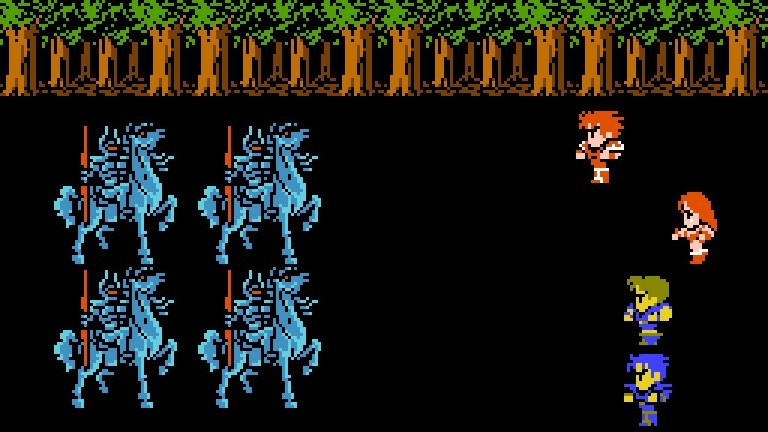Why Weren’t the Real Final Fantasy 2, 3, and 5 Released Outside of Japan?
Final Fantasy 2 and 3 are infamous for not being the true Final Fantasy 2 and 3 in the West, but Square didn't just release the games this way to confuse us.

These days, Final Fantasy fans are spoiled for choice. Virtually every entry in the mainline series, as well as the spinoffs, are readily available worldwide, both physically and digitally. If you live in North America or Europe and want to play Final Fantasy 1 through 15 in chronological order, you’re now able to do just that. However, some gamers remember when this wasn’t the case at all. In the early days of Final Fantasy, Square released certain mainline entries exclusively in Japan, which meant the rest of the world had to wait years to get their hands on these games. The situation also meant that Square released certain numerical installments out of order in other regions, which made the franchise even more confusing to follow for players outside Japan.
After the success of the original Final Fantasy in North America, Square followed up that title with the even-more beloved Final Fantasy 2 and Final Fantasy 3 on the SNES…but then the company released Final Fantasy 7 on the PlayStation. What happened to the fourth, fifth, and sixth entries?
North American audiences later learned that what they thought was Final Fantasy 2 in 1991 was actually Final Fantasy 4 in Japan, and that the Final Fantasy 3 originally released worldwide in 1994 was actually Final Fantasy 6, which raised the obvious question of “Why?” Why didn’t Square release Final Fantasy 2, 3, and 5 in the right order for the rest of the world? A combination of then-emerging technology, localization issues, and concerns over difficulty is to blame.
According to an old GameTrailers retrospective, Square Enix originally had every intention of bringing the real Final Fantasy 2 to North America. Kaoru Moriyama, who ultimately translated Final Fantasy 4, was first charged with the English localization of Final Fantasy 2 in 1991 and helped produce a functional prototype. Square even had a title for the game’s North American version: Final Fantasy 2: Dark Shadow over Palakia. But then Square canceled the localization because it was taking too long and due to the looming release of the SNES. The studio felt Final Fantasy 2, which first launched in Japan in 1988, was too old to bring to other regions just as a new, more powerful console was about to hit the market. Instead, Square packaged Japan’s Final Fantasy 4, which was the first installment designed for the SNES, as Final Fantasy 2 in North America to avoid confusing players.
As for the real Final Fantasy 3, that game hit store shelves in Japan shortly before the first Final Fantasy even released in North America in 1990. In an interview with Eurogamer, the designer of the first three Final Fantasy games, Hiromichi Tanaka, explained that Square had its hands full with newer installments for the SNES and just didn’t have enough developers to work on an English localization of the third installment — even though Nintendo actually advertised one in magazines. In 1994, Square launched its latest game (and arguably its masterpiece), Final Fantasy 6, as Final Fantasy 3 in North America.
This of course meant that Japan’s Final Fantasy 5 was also skipped over in the process, not to be released in North America until years after its 1992 launch. Square reportedly tried to ship Final Fantasy 5 to other regions multiple times, but none of these attempts to localize the game for North America panned out. As the story goes, Square felt the game was too difficult for the average gamer and that its tone and humor just wouldn’t translate in other parts of the world. Square allegedly considered retitling and repackaging the game as a standalone title for other markets in order to distance it from the main series, but the studio ultimately scrapped tha idea, too. Ted Woolsey, a former translator at Square, claimed one potential name for the game was “Final Fantasy Extreme.”
However, despite all these failures, Square decided that if it couldn’t port Final Fantasy 5 to North American SNES consoles, it would bring the game to PC instead. Square hired the studio Top Dog Software to port the game, but that localization was canceled. Afterwards, Eidos Interactive purportedly was tasked with porting the game to Windows, but again, no dice.
After all these false starts, gamers decided to channel the phrase “If you want something done right, do it yourself” and made their own fan translation of Final Fantasy 5. Before the game was eventually ported to PlayStation in 1999 and Game Boy Advance in 2006, North American audiences could only play Final Fantasy 5 if they used the fan translation or knew how to read Japanese.
Like we said earlier, Final Fantasy fans have it very good in 2023.
